Best Desktop CPUs with Integrated Graphics 2020/21
So, it’s been a month since Intel hyped further the unveiling of its already coming-very-soon Tiger Lake mobile processors. You know, those mobile CPUs that are slated to come with Iris XE integrated graphics. The Core i7-1185G7 for instance, was touted by Intel to be directly comparable with something that is equivalent to a GTX 1050, seemingly declaring the end of AMD APUs reign within the niche forever.
This then got us thinking. What other great selections out there are available for people who are interested in integrated graphics right now? Not for laptops, but for PCs. And we mean real PC options for budget-oriented people, not just some additional feature for your kiosk desk station.
Because the last thing that you want in integrated graphics, is negligible gaming potential. If you want something a little bit more than just an old-century emulation machine, here are a few modern notable selections for your GPU-less desktop PC build:
(DISCLAIMER: Entries on this list will mainly be chosen for the package they provide for a given economic price. After all, your main purpose is to do away with discrete graphics, meaning cost is of technical importance.)
Best Desktop Processors with Integrated Graphics
A quick rundown on desktop processors with integrated graphics from AMD. The company labels their processors with integrated Vega Graphics by replacing the X at the end of the numbering system with G or GE. We take it that G is for Graphics and GE is for Graphics with Efficient cores. If you come across a processor from AMD with its name ending with X e.g. AMD Ryzen 9 5900X, then it is a desktop processor without integrated graphics.
1. Honorable Mention: AMD Athlon 3000G
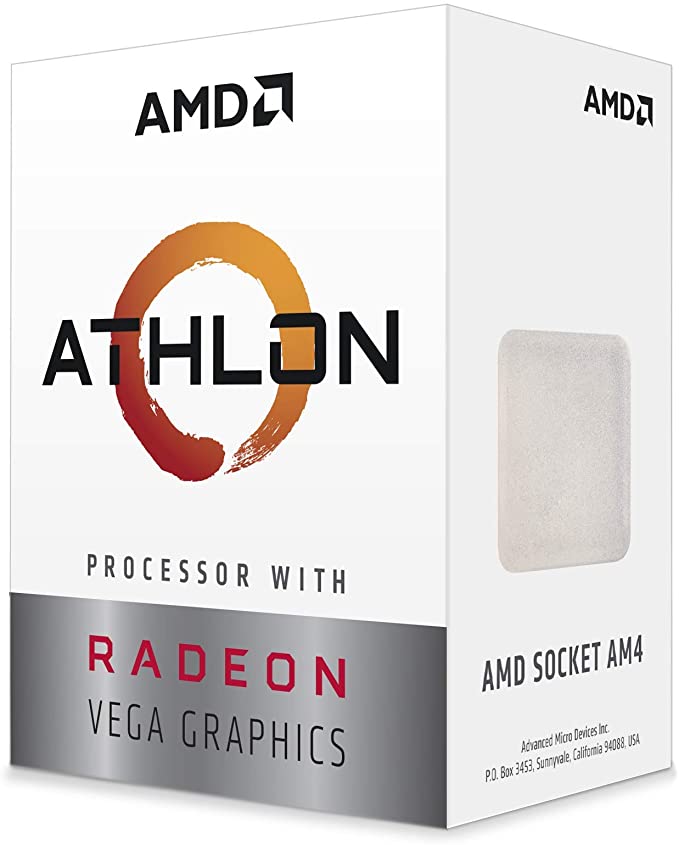
| Base Clock: 3.5 Ghz |
| CPU Cores: 2 |
| Threads: 4 |
| Socket Type: AM4 |
| GPU Clock: 1100 Mhz |
| GPU Type: Radeon Vega 3 |
GPU Equivalent(s):
(85%) GeForce GT 730
(70%) Radeon R7 240
Introductory Price:
$50
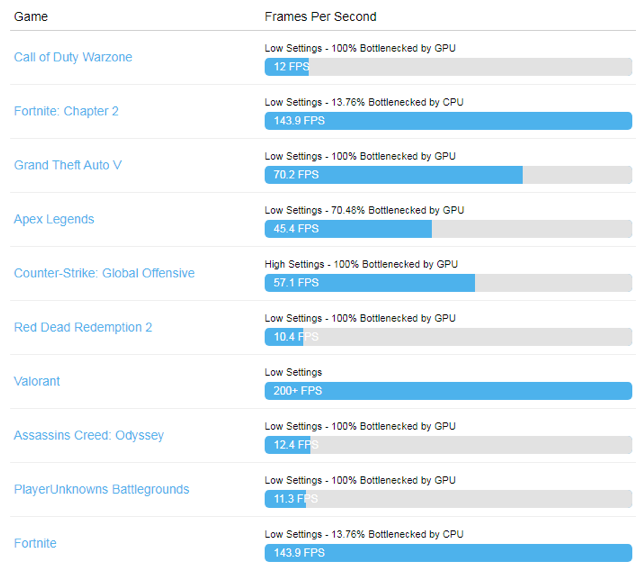
Sitting just one single step outside the boundaries of acceptability is the relatively recent Athlon 3000G, specifically designed for super-budget PCs. As a constant thematic (economic) build of its design, it is set to not only have an entry-level cost, but to allow the budget PCs that it will be used with to do away with dedicated graphics cards altogether. As such, any PC using this APU (Accelerated Processing Unit) can be set up at several times lower the cost of modern laptops (not-installed with GPUs of course) with similar specifications. Its integrated graphics does lose out eventually to the likes of Intel Core i7-8809G, but these CPUs are almost never found on lower-end mobile devices, and are thus not directly comparable with each other.
When viewed purely from a gaming perspective, the Athlon 3000G still doesn’t reach the baseline minimum for current budget dedicated GPUs, even if it is was released late in 2019. This is a strictly super-budget APU after all, so don’t expect it to even match an old GTX 750Ti. But if you’re willing to play games on lower settings, a few games from three to five years ago would run on its system quite reliably without too much frame issues.
2. Finest Entry-Level Gaming: AMD Ryzen 3 2200G
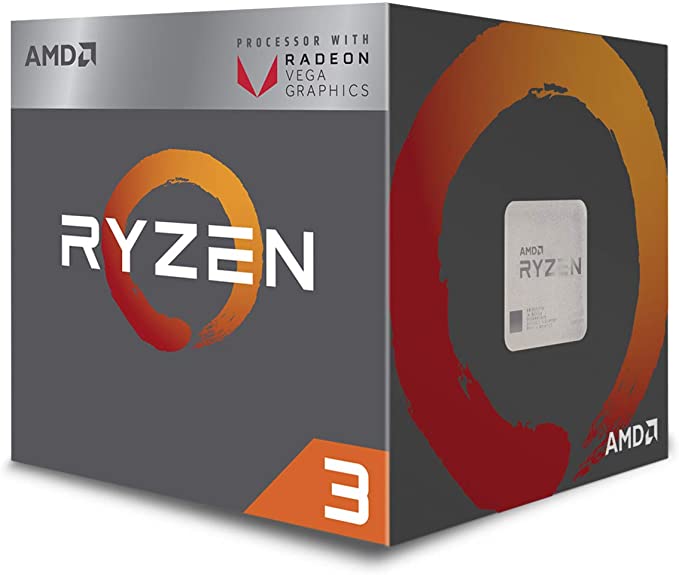
| Base Clock: 3.5 Ghz |
| Max Clock: 3.7 Ghz |
| CPU Cores: 4 |
| Threads: 4 |
| Socket Type: AM4 |
| GPU Clock: 1100 Mhz |
| GPU Type: Radeon Vega 8 |
GPU Equivalent(s):
GeForce GT 740
ATI Radeon HD 4890
Introductory Price:
$100
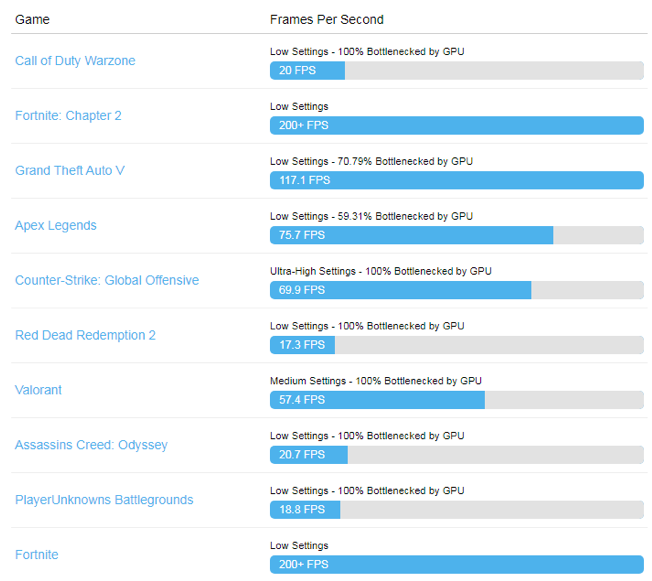
The next step upgrade from the last entry is quite the leap, as Ryzen 3 2200G not only rocks the twice-more-efficient Radeon Vega 8 integrated graphics, but also has the base CPU architecture to outmatch the Athlon 3000G at every turn. Do take note though that this leap isn’t exactly as huge as it seems, averaging “only” about 30% more on most CPU benchmarks. So you’ll have to take that in consideration with the APUs current retail price, which somewhere double that of Athlon 3000G.
But even though Ryzen 3 2200G isn’t exactly light years ahead, it is still technically treading over that minimum performance boundary. GPU-wise this means that most graphics intensive modern games are already available at the lowest settings, as opposed to being completely unplayable for anything else below it. Emphasis on the world “available” here, since there is actually no guarantee that playability will be stable. Oh yes, and this also means that on this APU, medium settings will be a viable option for old games that can only be played on low settings for Athlon 3000G.
3. Half-Step Above Budget: AMD Ryzen 3 3200G
UPDATED: AMD Ryzen 3 4300G or AMD Ryzen 3 5300G
Depending on availability in your geographical region, the newer generations AMD Ryzen 3 4300G and AMD Ryzen 3 5300G falls into this “half-step above budget” category. Consider going for the much improved AMD Ryzen 3 5300G with Radeon Graphics 1700MHz 6-core integrated GPU.
NOTE: The AMD Ryzen 3 4000 series are reserved for OEM only. You can get off the shelf desktops or barebone with them but not as CPUs to build your own system.
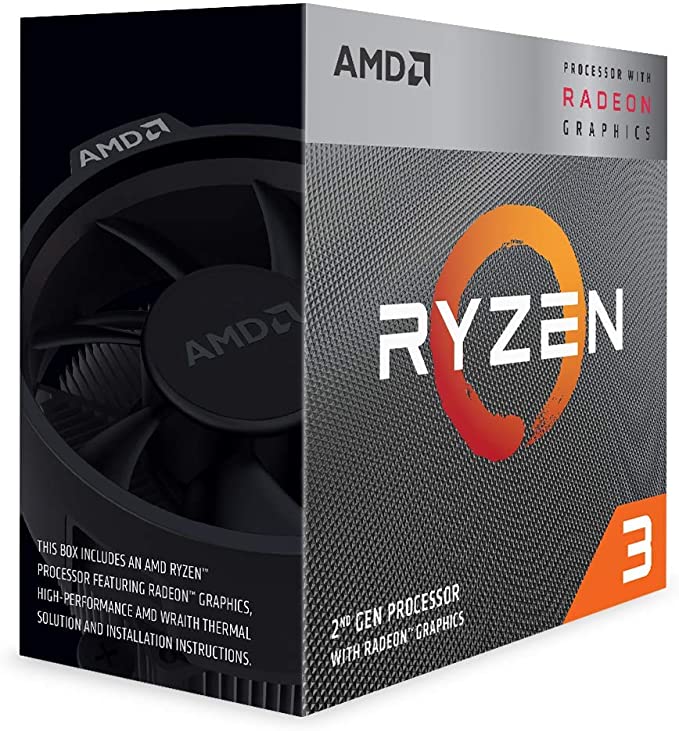
| Base Clock: 3.6 Ghz |
| Max Clock: 4.0 Ghz |
| CPU Cores: 4 |
| Threads: 4 |
| Socket Type: AM4 |
| GPU Clock: 1250 Mhz |
| GPU Type: Radeon Vega 8 |
GPU Equivalent(s):
GeForce GT 740
ATI Radeon HD 4890
Introductory Price:
$100
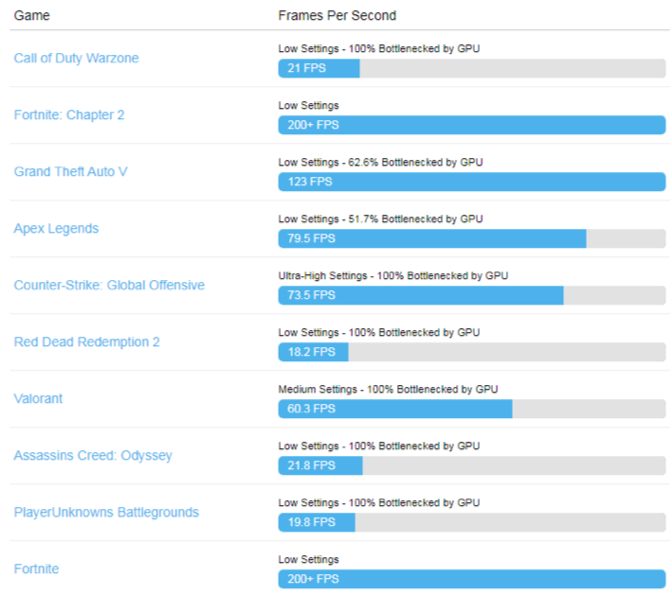
Stepping one generation ahead of the previous entry is the Ryzen 3 3200G. As we can see in both specifications and benchmarks, there isn’t really that big of a difference in overall theoretical performance. The gap would mainly come from tweaking your CPU and GPU settings. Whether it is by overclocking, managing your power settings, or just disabling background OS tasks, it would be easier to squeeze a bit more performance out of it with its extended specs.
Do remember though, that availability will be the biggest factor for your choice between the two. Ryzen 3 2200G had a headstart, and therefore may be cheaper than the 3200G. In most cases though, both will be introduced at prices very near each other, so Ryzen 3 3200G gets the “economy” advantage.
4. Intermediate Integration: AMD Ryzen 5 2400G
UDPATED: AMD Ryzen 5 4600GE or AMD Ryzen 5 5600GE
Depending on availability in your geographical region, the newer generations AMD Ryzen 5 4600GE and AMD Ryzen 5 5600GE falls into this “Balanced, as All Things Should Be” category. Consider going for the much improved AMD Ryzen 5 5600GE with Radeon Graphics 1900MHz 7-core integrated GPU. Compared to the G sub-series below, the GE sub-series considered here have lower Default TDP of 35W vs 65W and a lower base boost clock speed (3.4GHz for AMD Ryzen 5 5600GE and 3.3GHz for AMD Ryzen 5 4600GE)
NOTE: The AMD Ryzen 5 4000 series are reserved for OEM only. You can get off the shelf desktops or barebone with them but not as CPUs to build your own system.
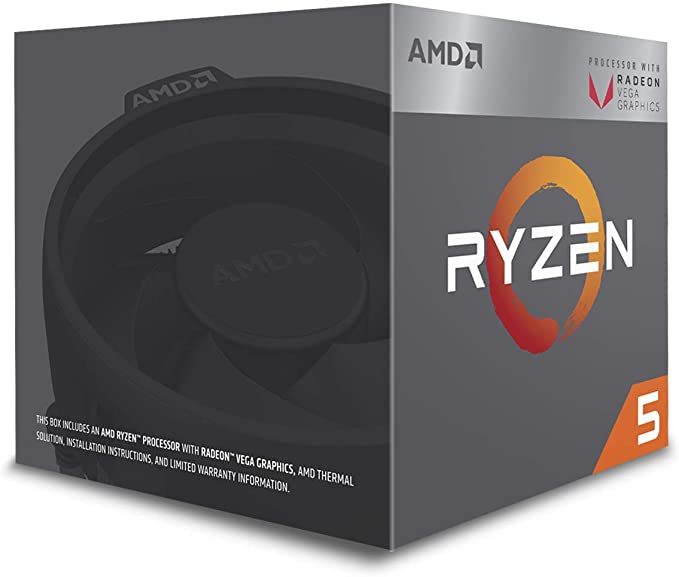
| Base Clock: 3.6 Ghz |
| Max Clock: 3.9 Ghz |
| CPU Cores: 4 |
| Threads: 8 |
| Socket Type: AM4 |
| GPU Clock: 1250 Mhz |
| GPU Type: Radeon RX Vega 11 |
GPU Equivalent:
Geforce GT 1030
Radeon RX 550
Introductory Price:
$150
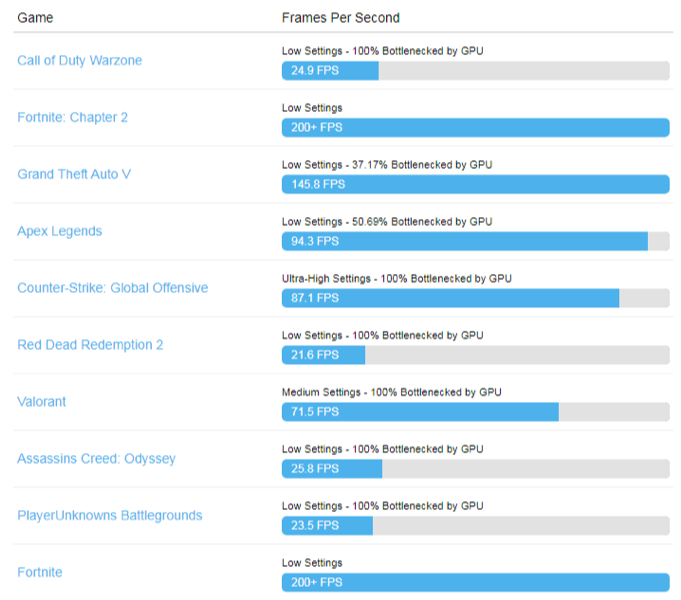
Now we head over to the next generation tier, of discrete GPU-less budget gaming. Ryzen 5 2400G is the technical step-up from Ryzen 3 2200G. Needless to say, this makes performance margins far more flexible. Oh? You’re asking why we did not use the word “better”? Well, actually, the CPU itself is not that much different benchmark-wise. The enhancement factor for it is the GPU, which is a Radeon RX Vega 11. As you may expect based on the listed GPU equivalent, the potential performance difference is at a completely different level.
So gaming-wise, we finally come at a point where you can sit down and casually enjoy most title available today with a Ryzen 5 2400G. Granted, you’re still pretty much stuck to low-settings and 720p, but the framerates are good enough to not significantly affect your playing performance. Unleash AMD OverDrive (this is a desktop CPU don’t worry) to crunch a few more frames for even better stability!
5. Balanced, as All Things Should Be: AMD Ryzen 5 3400G
UPDATED: AMD Ryzen 5 4600G or AMD Ryzen 5 5600G
Depending on availability in your geographical region, the newer generations AMD Ryzen 5 4600G and AMD Ryzen 5 5600G falls into this “Balanced, as All Things Should Be” category. Consider going for the much improved AMD Ryzen 5 5600G with Radeon Graphics 1900MHz 7-core integrated GPU. The G series considered here are the more powerful and higher TDP part compared to the GE series above. These run at typical TDP of 65W vs 35W and have higher base clock speed (3.9GHz for AMD Ryzen 5 5600G and 3.7GHz for AMD Ryzen 5 4600G).
NOTE: The AMD Ryzen 5 4000 series are reserved for OEM only. You can get off the shelf desktops or barebone with them but not as CPUs to build your own system.
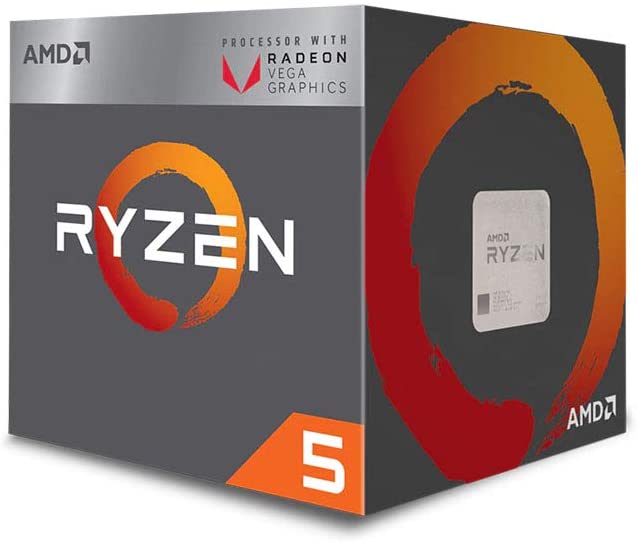
| Base Clock: 3.7 Ghz |
| Max Clock: 4.2 Ghz |
| CPU Cores: 4 |
| Threads: 8 |
| Socket Type: AM4 |
| GPU Clock: 1400 Mhz |
| GPU Type: Radeon RX Vega 11 |
GPU Equivalent:
Geforce GT 1030
Radeon RX 550
Introductory Price:
$150
Much like the Ryzen 3 3200G, Ryzen 5 3400G also officially supersedes the Ryzen 5 2400G as its next generation counterpart. But unlike the comparison between Ryzen 3 2200G and 3200G, the performance difference between Ryzen 5 2400G and 3400G is quite significant. Looking at the specs above, the answer should present itself openly: better architecture, and clock frequencies for both its CPU and GPU.
There isn’t really much to say here at this point if we have already described how the previous Ryzen 5 2400G works. If you are looking for the ultimate recommendation for a desktop-based integrated graphics-installed CPU, then this is it. The maximum performance that you can get, for the relatively good price available that still sits very far away from any discrete graphics card setup.
BONUS: Go Crazy: AMD Ryzen 7 5700G or AMD Ryzen 7 5700GE
Undoubtedly the strongest processor with the fastest integrated Radeon Graphics comes from the Ryzen 7 5000 series processor. Both processors come with 8 CPU Cores and support up to 16 threads. Again, one is a performance model (G) and the other, an energy efficient part (GE). Look at the features comparison tables below.
| AMD Ryzen 7 5700G | AMD Ryzen™ 7 5700GE | |
|
Graphics Model
|
Radeon™ Graphics
|
Radeon™ Graphics
|
|
# of CPU Cores
|
8
|
8
|
|
# of Threads
|
16
|
16
|
|
Max Boost Clock
|
Up to 4.6GHz
|
Up to 4.6GHz
|
|
Base Clock
|
3.8GHz
|
3.2GHz
|
|
Default TDP / TDP
|
65W
|
35W
|
|
# of GPU Cores
|
8 | 8 |
| Graphics Speed | 2000MHz | 2000MHz |
The AMD Ryzen 4000 series is OEM only so you won’t be able to get your hands on those as a PC builder.
For gaming and graphics performance, the AMD Ryzen 7 5700G with its built-in Radeon Graphics does not disappoint. Here we look at the frame rates of Civilisation VI 84FPS, Assassin’s Creed Odyssey 34FPS, Counter-Strike GlobalOffensive 127FPS, Metro Exodus 46FPS, Fortnite 92FPS and League of Legends 199FPS. See graph below.
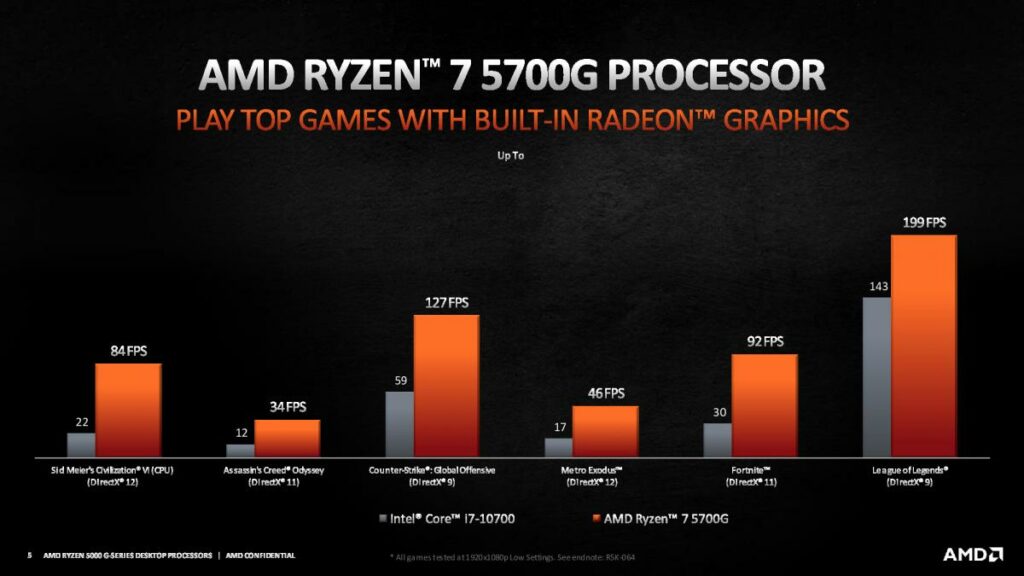
For the best integrated graphics performance, go with the AMD Ryzen 7 5700G. With the chip shortage, supply issues and demands cause by Bitcoin miners in 2021 plaguing the graphics card market, CPUs with integrated graphics present a viable stop-gap solution. After all, as long as the motherboard can support a graphics adapter, a dedicated GPU can be an upgrade for later when things calm down.
Final Thoughts
We have considered the Ryzen 2000, 3000 and 5000 series above but what about the 4000 series. AMD’s Ryzen 4000 G-series chip with integrated graphics is only available to PC manufacturers or Original Equipment Manufacturer (OEM) and not for enthusiasts or PC builders. The 7nm chip with Zen 2 architecture will be available in pre-built systems from the likes of HP and Lenovo.
So yeah, the domination of AMD APUs in this article should have been quite obvious from the beginning. Well, competing Intel desktop CPUs aren’t exactly bad. There’s the Coffee Lake Core i3-10100 that could slightly outperform the AMD Athlon 3000G for instance. But Intel being Intel, introductory prices for these performance-equivalent processors are always jacked up. On the flip side, that’s probably fair enough, as mobile devices do need integrated graphics more, so Intel’s exclusive focus on laptops for Iris Plus (and Iris XE) Intel CPUs is understandable.
Additionally, some of you may have noticed the omission of some of the high-end modern CPUs with integrated graphics. While these can fairly compete, they are usually no longer recommended setup wise, as they are already crossing the “just buy a discrete graphics card with that money” territory.


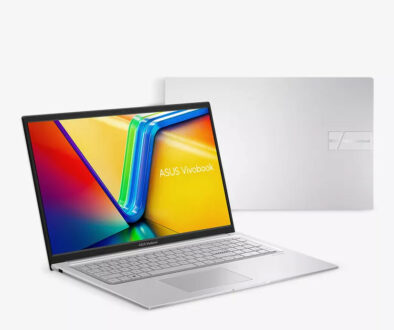

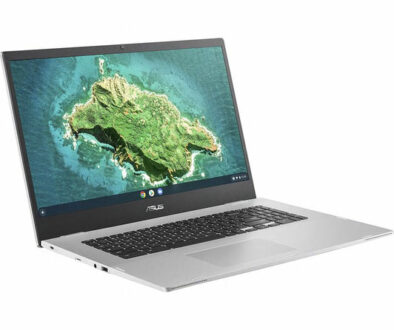
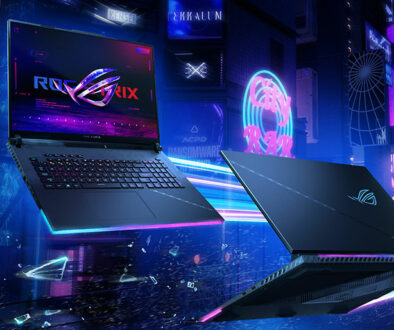
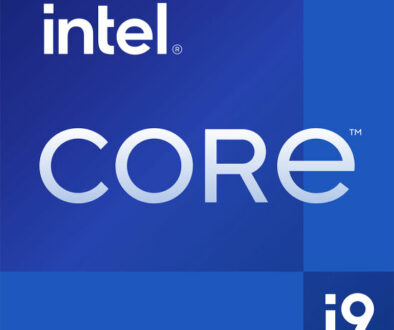
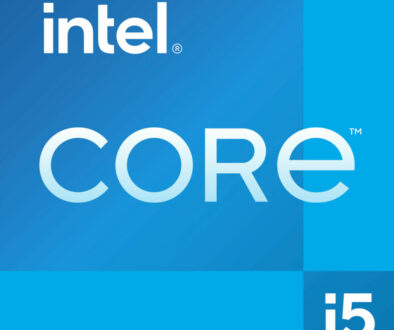
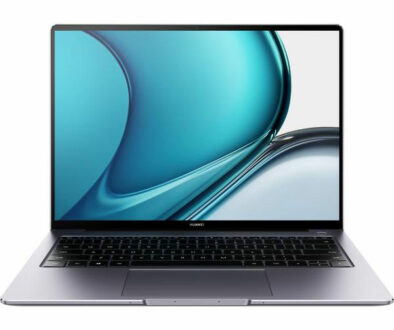
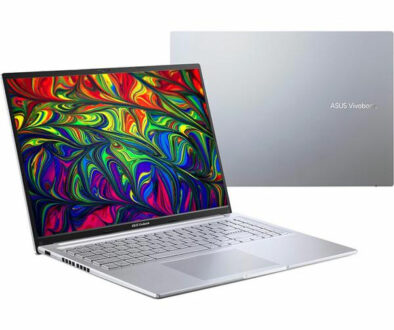
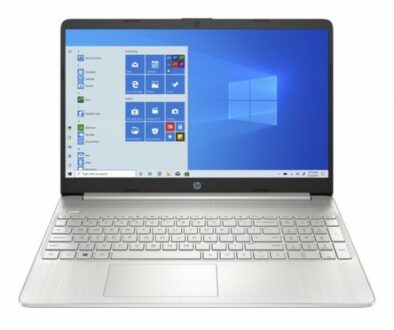
2nd June 2021 @ 3:28 am
would my RAM Clock Speed (3200MHz; dual channel) boost my iGPU Vega 11 (Ryzen 5 3400G)?
If so, what is the limit? and any other recommendations.
my motherboard is X570 (yes, my current CPU is temporal)